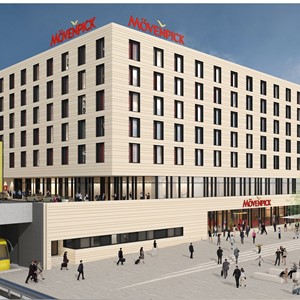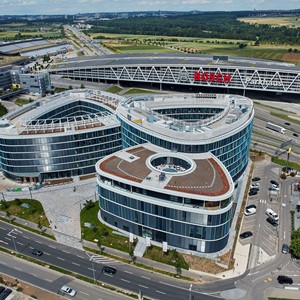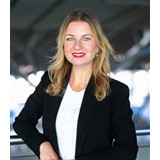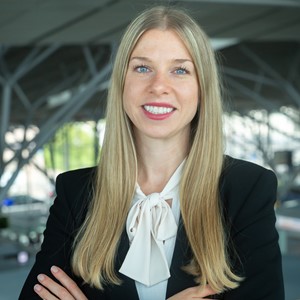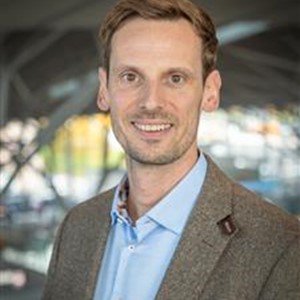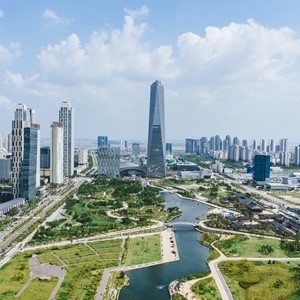
An excellent business quarter
Ecology and sustainability issues play a central role in the construction and development of the Stuttgart Airport City business park. Aspects such as environmental protection, energy efficiency, noise protection and accessibility have been consistently implemented in the concept, which has already been award a pre-certificate in gold by the renowned German Sustainable Building Council.
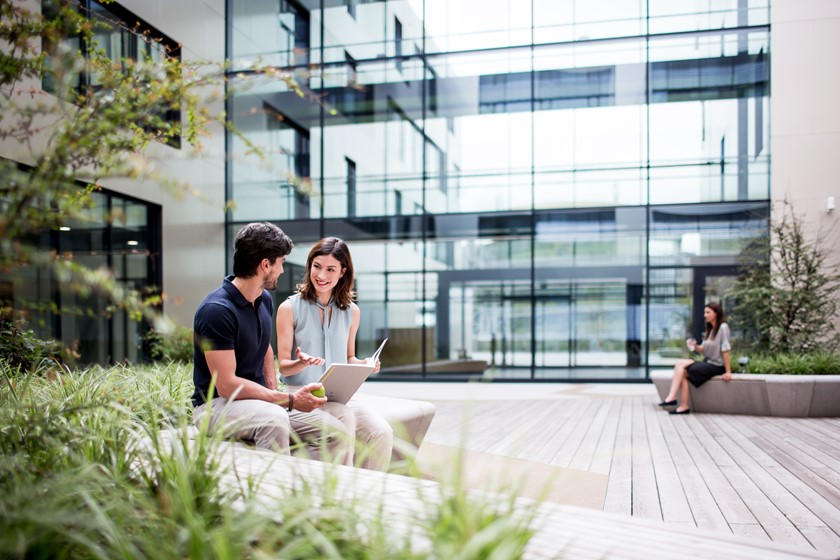
The advancing climate change is one of the central social challenges for which everyone must take responsibility. In order to make a noticeable contribution, Flughafen Stuttgart GmbH established a Fairport code with binding values and guidelines years ago and devised a corresponding sustainability strategy with the goal of consistently reducing environmental impact across the board. A climate-friendly block-type thermal power station is just one example of the efforts in this regard. Since its commissioning in December 2013, the highly efficient plant has saved around 4,800 tons of CO² per year compared to conventional operations. This means that greenhouse gas emissions have been reduced by 23 percent.
These ecological quality criteria and guidelines also play a central role in the construction and development of the new Stuttgart Airport City business park. One focal point is the design of so-called "Green Buildings", i.e. buildings that stand out for their high energy efficiency. At the same time, the selection of energy sources and materials drastically reduces harmful effects on health and the environment. This guiding principle runs through the entire life cycle of the building from project development and planning to construction, operation and maintenance and also adds to value stability.
The SkyLoop office complex was developed and built according to this quality criteria and serves as a showcase. The building, which is also the headquarters of the auditing company Ernst & Young, is supplied with energy from the natural gas-fired combined heat and power plant, among other things. Some of the electricity is produced by large-scale photovoltaic systems installed, for example, on the Bosch multi-storey car park above the A8 autobahn.
An important contribution to sustainability is likewise made by the concrete core activation in the building. This technology uses the ability of the ceilings to store thermal energy. Depending on requirements and the time of year, the heat is either dissipated from the building through pipe systems in the concrete or fed from the lower-lying ground. In this way, the energy needs for heating and cooling can be significantly minimized.
Flughafen Stuttgart GmbH was the first facility of its kind to have its entire business quarter certified by the renowned German Sustainable Building Council (DGNB)--a visible sign that environmental protection is a strategic corporate objective. The non-profit and non-governmental organization was founded in 2007 by various universities, architectural offices and other initiators of various disciplines with the aim of developing and promoting sustainable construction even more strongly in the future. To this end, the non-profit organisation has also developed a comprehensive catalogue of criteria to be used in the assessment of construction projects.
In accordance with the DGNB assessment, Stuttgart Airport Company was awarded a gold pre-certificate for its concept, a clear signal that the Stuttgart Airport City commercial area is a sustainable quarter. The appraisal not only took into account ecological, economic and socio-cultural aspects, such as the ecological balance, energy efficiency and value stability of the buildings. The quality of the location is one of the most important critera and Stuttgart Airport City scores thanks to its excellent connections to various traffic systems.
A separate long-distance railway station is being built on the Fildern as part of the Stuttgart-Ulm railway project. It will be integrated in the new rapid-transit railway line, significantly improving the catchment area and accessibility of Stuttgart Airport and connected areas.
At the same time, a new long-distance bus station, various regional bus lines, a local train station and the extension of the U6 tram line to the airport will ensure an optimal and environmentally friendly connection to the airport site. All these quality features and a few more convinced the German Sustainable Building Council to recognize Stuttgart Airport City as a sustainable and ecological showcase project.
This might also interest you


